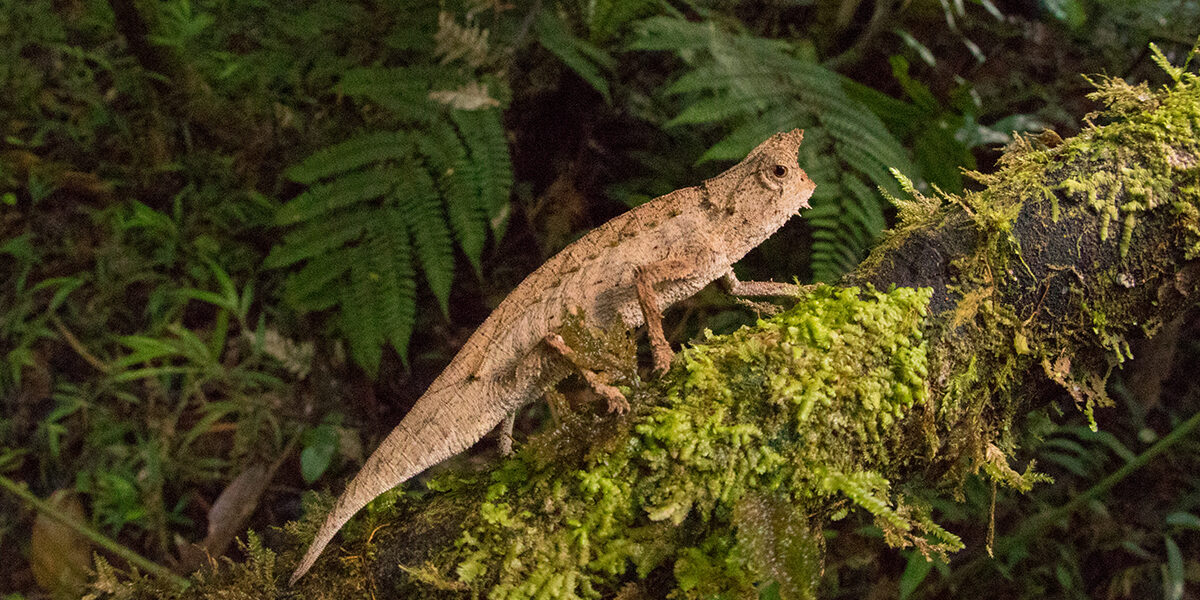Movement pattern of Brookesia superciliaris
Until now, movement patterns in chameleons have mainly been studied in tree-dwelling species. The predominantly ground-dwelling genera such as Brookesia, Rhampholeon, Palleon and Rieppeleon, which represent about a third of all currently known chameleons, have only rarely been considered. A group of US researchers has now taken a closer look at the terrestrial chameleon Brookesia superciliaris.
The movement of living Brookesia superciliaris on different surfaces was measured and comparisons made with tree-dwelling chameleons and other lizards. Surprisingly, the terrestrial chameleons showed movement characteristics of both tree-dwelling and ground-dwelling animals. Brookesia superciliaris moved slower on branches than on substrate imitating soil. The gait speed was mainly regulated by the step frequency and not by the step length. Although at the beginning of a step the upper arm is strongly extended, a typical feature of aboreal locomotion, shoulder and hip movements on branches are less than usual for arboreal dwellers. This could indicate a predominantly terrestrial lifestyle. When Brookesia superciliaris moves very slowly, it often uses a very unusual step sequence and lapses into a passing gait. Brookesia superciliaris could be considered an example of an intermediate stage between ground and arboreal dwellers because of its early evolutionary split from the developmental lineage of other chameleons.
Locomotor characteristics of the ground-walking chameleon Brookesia superciliaris
Chukwuyem Ekhator, Arnavi Varshney, Melody W. Young, Daniel Tanis, Michael C. Granatosky, Raul E. Diaz, Julia L. Molnar
Journal of Experimental Zoology Part A 339 (4), 2023
DOI: 10.1002/jez.2703


